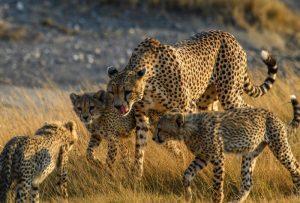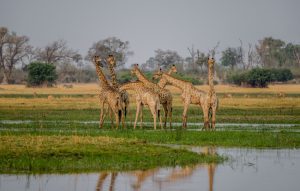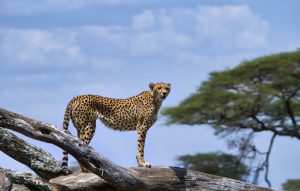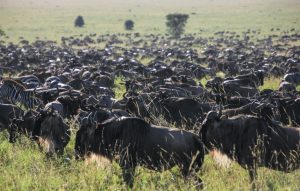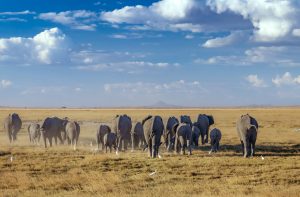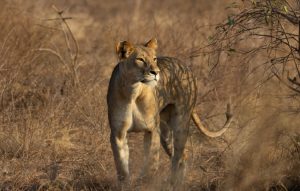KENYA’S ICONIC WILDERNESS
Masai Mara National Reserve
Breathtaking scenery, and endless plains.
Overview
Masai Mara National Reserve is located in the south-west of Kenya and is one of Africa’s most famous parks; it is without doubt that this is the one of the best places for wildlife viewing, breathtaking scenes, and endless plains.
Maasai Mara National Reserve stretches 1,510 km2 (580 sq miles) and raises 1,500-2,170 meters above sea level, bordering the Serengeti National Park in Tanzania to the south. Suppose we add Masai Mara conservancies, the area is at least twice the size. It hosts over 95 species of mammals and over 570 recorded species of birds.
Wildlife safaris in Masai Mara are excellent throughout the year offering visitors several reasons to re-visit this wildlife paradise. The great climate and grassy plains support a huge population of herbivores which in turn attract many predators. The African big 5 wildlife are all present here, and all three big cats are somewhat easy to see among the list are Elephants, Rhino, Serval Cat, African Buffalo, Wildebeest, Giraffe, Zebra and many more as mentioned below are found in the parks natural habitat.
The Greater Mara ecosystem covers areas known as the Maasai Mara National Reserve, the Mara Triangle, several Maasai group ranches, and Maasai Mara conservancies. Yearly, get your chance to witness the Great Wildebeest Migration coming through the park – one of the world’s most amazing wildlife spectacles.
-
The reserve is a photographer’s and travellers paradise, dramatic river crossings and of course... more wildlife and adventure with abundant elephant, buffalo, giraffe, lion and cheetah alongside the migratory wildebeest and zebra and large numbers of hippos and crocodiles are found in the Mara River.
-
Over two million wildebeest, zebra and other herbivores trek from the southern Serengeti to the lush green grasses of the Masai Mara. Known as one of the seven wonders of the world, the great migration is an iconic safari must-see.
-
Enjoy unlimited game viewing drives, the colorful Masai tribesmen and cultural tour. A tour in undeniably one of Africa’s top safari destinations.
-
A safari to some of Kenya’s leading National Parks and Reserves. Amboseli National Park, famous for its views of Mount Kilimanjaro and good numbers of elephants, Lake Nakuru with its diverse wildlife and distinctive lakes, and the world-renowned Masai Mara.
-
A perfectly tailored 5 days Kenya safari to offer some of the spectacular views in Kenya, this safari takes you on a visit to Masai Mara, the most popular wildlife safari destination in Kenya, Lake Nakuru a birder’s haven and home to the endangered black and white rhinos, and finish off with a cycling safari at Hell’s Gate.
-
Views of snow-capped Mt. Kilimanjaro - Game drives to see chimpanzees, lions, waterbuck, and elands among others. - Opportunities to touch rhinos - Discovery boat ride – view wildlife on the shore, walking safari on Crescent Island amongst the giraffes, zebras & more.
The Great Wildebeest Migration In Masai Mara National Reserve
The Wildebeest Migration is nothing short of amazing, and is one of the things you can add on to your bucket list safari in Kenya.
Masai Mara National Park is famous for hosting the Great Wildebeest Migration, which named it as one of the Seven Natural Wonders of Africa and as one of the ten Wonders of the World.
During this period, the Masai Mara welcomes 1.5 million wildebeests, including Grant’s zebra, Thomson’s gazelles, Topis, Common eland and other wild animals including the “Big Cats” migrate north into the Mara from Serengeti National Park as they follow the rains in search of new grass every year. This migration typically takes place between July to mid-September and involves the wildebeest making dangerous crossings through crocodile-infested rivers.
They usually cross into Kenya every July or August through October. Although the migration safari month by month timing is never guaranteed, August and September are when you’re most likely to see the herds undertaking the famous crossing of the Mara River in Kenya. They slowly head back into the Serengeti around October.
Another way to watch the Great Migration drama in Masai Mara is by taking it to the skies for a high-flying hot-air balloon safari at sunrise or hit the road for the 4×4 Jeep Migration safari, you’re sure to leave the Masai Mara with unforgettable experiences and lifelong memories.
Landscape Scenery & Setting
The short bushy trees that dot the landscape do give it a kind of ‘spotted’ look. The Greater Masai Mara ecosystem is huge. It covers an area of 1,510 km2 (580 sq miles), a land of breathtaking scenery, abundant wildlife and endless plains.
The area is bordered by the Serengeti in the south and to the north, east and west lie the Maasai Ranches. Extensive savannah grassland dominates the landscape in the Masai Mara although the riverbanks of the area’s three rivers (The Sand River, Talek River and Mara River) are lined with shrubs and trees, most of the reserve is made up of open grassland spotted by an occasional flat-topped acacia tree and rocky hills intermix the plains.
The Maasai word ‘Mara’, meaning spotted, and now you can understand how it refers to these dots in the landscape that you will soon see on your trip to Masai Mara. Another scenic point to take note of is on the northern part, called the Oloololo Escarpment (also named the Siria Escarpment) marks the northern boundary of the Mara. The stunning views from the top allows you to view the whole ecosystem.
Activities In Masai Mara National Reserve
If you are the type of traveler looking to fill your day with an extra activity, something exciting and more adventurous, there are plenty of things to do in Masai Mara, from luxury experiences such as Hot Air Balloon flights over the plains where you can see wildlife down below, to exciting sun-downer bush meals, night game drives and guided nature walks.
Some of the most popular safari activities are brief visits to a traditional Maasai tribal village for a cultural immersion and gain some understanding on the day-to-day life of your local hosts.
”Game Drives” in Masai Mara is the main activity when you book your safari in Kenya you will have seen game drives indicated throughout the itinerary.
These game drives involve the use of a 4X4 Land Cruiser Jeep with an open roof-top and you will be making drives in search of the resident wildlife in their natural habitat.
The drives are usually divided into two (2), the morning and afternoon hours, with morning timings usually scheduled from 6.30am to 9am and afternoon timings being 3.30pm to 6.00pm, however travelers may sometimes go for a full day game drive generally from 6am to 6pm, in which case the drive will include a packed picnic lunch to be enjoyed inside the Masai Mara Reserve at a chosen picnic spot, during lunch hours anytime from 12.30pm to 2.30pm.
However take note that the above depends on the safari package that you have chosen, is it a Private Kenya safari, Group joining safari, or is it a Flight tour package to Masai Mara. Time planning is important because you will find that tourists with special interests such as Photography safaris or Bird Watching tours are advised to opt for private drives.
If you decide to stay at a lodge in one of the conservancies, the lodge offers a variety of safari options. One of those could be day safari into the Masai Mara National Reserve proper. Please keep in mind that if you plan on staying at a lodge within the actual National Reserve, it will not be possible to do a safari into a neighboring conservancy. Safaris within the conservancies are only possible for those staying at lodges within their boundaries.
Fly high up in the skies above the Masai Mara, a truly ‘once in a lifetime’ experience like no other.
Flying in a Hot Air Balloon over the Masai Mara plains is an exciting experience where you have the chance to watch from above this iconic park, a never-ending exciting mixture of forests, endless savannah grassland plains, towering escarpments and rugged rivers. All this with the rising sun as your background.
Generally, the Hot-Air Balloon flights in the Masai Mara takes offs at the break of dawn, around 6am, floating silently during the ride over the savannah grasslands below where you may spot a variety of wildlife. The flight lasts an hour and completes with a ”Champagne Bush Breakfast” at the balloon landing site in the wilderness. Understand more on planning a Masai Mara balloon safari.
Experience the Masai Mara on a different level, enjoying your meal in the raw African wilderness specifically inside the Masai Mara where you are surrounded by nothing but scenic views framed by stunning landscapes and magnificent wildlife. You are free to choose from the following options;
Picnic Lunch: Usually arranged during a full day game drive in the reserve so that one does not have to go back to the lodge or camp for lunch, the meal itself is in the form of packed lunch boxes which are provided by your camp or lodge by prior arrangement the night before to allow them adequate time to prepare the meal boxes. The meal itself is often enjoyed on a scenic setting inside the wild park making it a truly memorable experience.
Bush Breakfast & Dinners: At the end of the day, a campfire dinner awaits. The glow of lantern-lit trees and the star-studded sky above only add to the feel and make these dinners something to look back upon with a smile for a very long time to come, this could also be your Honeymoon in Masai Mara, or Family safari event around a bonfire with entertainment such as light music or tribal dance performances. Bush meals are arranged at special selected sites within the Masai Mara and these are generally located outside of but very near the respective Lodges or Camps. Menus can range from multi-course fine cuisine to more casual bush barbeque meals, prices for these special meals differ widely starting from USD 40 per person all the way to USD 100 per person for more luxurious bush meals.
Sundowners: As the sun begins to set, it’s the perfect time for a sundowner in the company of friends or loved ones while you sip on your favorite drink or cocktail, and bite on some tasty snacks, you can watch the sun disappear beneath the horizon in a gorgeous display of fiery golds and reds right before your eyes is a very special experience indeed and recognizing this, many superior hotel properties in Masai Mara now offer sundowners either pre-included into your stay or as optional add-on activities.
For sure your tour to Masai Mara would be incomplete without a visit to the most iconic tribal group in all of Africa, the Maasai tribe, who occupy huge areas of Southern areas of Kenya are the dominant ethnic group surrounding the Masai Mara.
This nomadic tribe still retain many of their traditions as they live largely untouched by modern day civilization, in areas surrounding Masai Mara.
So why visit a Maasai village and what do you get to see? This one hour visit to a Maasai village is a chance to interact with the Maasai people and get a preview into their culture, see first-hand some of their customs and practices.
The Maasai cultural experience usually happens to be on the borders of the main Mara game reserve boundaries. The price for a Masai village visit which includes a contribution towards the village in form of a fee, as well as return road transfers from your lodge or camp in Masai Mara to the village, varies between USD 20 to 50 per person. The fee of USD 50 per person applies when you have flown in on a package safari and it is then the Camp which will charge you the fee for the village visit and the price in this case can vary again from USD 30 to USD 50 per person based on which camp you are staying at and which village they take you to visit. This is something you can do even when you have booked Masai Mara group safaris
However, take note that once at the village, you may be expected to buy some curio or souvenir from the villagers, although this is not mandatory since you have already paid a village entry fee. Even so, be prepared for determined efforts from some of the Maasai villagers to try and sell you what are inexpensive handmade craft items. For some this can be an unfriendly part of the tour nevertheless, it is up to you to say yes or no to their products.
While at the Maasai village discover more about their traditional homes known as ‘Manyattas’, which are low height dwellings, the huts are mostly circular, and made of a mixture of mud, grass, cow dung and ash, with a single entrance and minimal side windows – take a look into the darkened inside, and you will see In this small space, where the family cooke, ate, slept, socialised and stored food, fuel and possessions.
A collection of these manyatta huts form a homestead or village commonly known as a Maasai ”Boma”. Additionally, several Bomas can also join together to make a larger village. The huts have no piped water, electricity or Gas.
How high can you jump? You will also have your chance to dress like a local Masai and dance to their traditional songs during this village visit. Discover more about their rites of passage which are given much importance.
A bush walking safari is one of Kenya’s best safari experiences, a Masai Mara walking safari is a walk like no other, a chance to explore on foot this iconic Kenyan wilderness park. The objective is seeing wild animals in a more natural way without using a 4 x 4 safari vehicle with sights of anything from great herds of buffalo to a gentle elephant in the forest.
What to Expect During Walking Safaris In Masai Mara
–Your Maasai guide will show you how his people interprets and makes use of the animals, birds, plants and the glorious landscape through which you are walking at.
–Learning; get to know a few of the plants on the escarpment and their various uses by the Maasai for medicinal and hygiene purposes.
–Socializing and fun moments; during your guided walks, your guide may share stories of his childhood with you, how he grew up to become a warrior, and how he learnt about the world around you
– You will be on an expert guided walk with a well-equipped Maasai spotter keeping an eye for predators and providing an interesting explanations to your surroundings. Expect a guide, dressed in their beautiful Maasai warrior clothing complete with headdress and ‘empere’ (spear), ‘engudi’ (peace stick), and ‘orinka’ (talking stick).
Understand, there are two types of safari nature walks offered while at Masai Mara. Nature walks within the camp and one walks outside the main reserve. The duration for this walks within the camp is approximately 45 minutes to 1 hour and the rate ranges from USD 50 to USD 75 per person. The duration for walks outside the main reserve is approximately 2.5 to 3 hours covering a distance of 9 – 15 km and includes a packed breakfast/lunch depending on the timings and game drives en route to and from the walking safari location and the rate ranges from USD 90 to USD 150 per person. These nature walks are preferrably done early mornings or late in the afternoon when the sun is not too hot.
Where walking safaris takes place; keep in mind that the main Masai Mara National reserve, both on the Narok county side and the Mara Conservancy side prohibit walking inside national parks.
However, private conservancies surrounding the main reserve allow for a well-planned and supervised walking safaris, while camps and lodges even inside the main reserve offer shorter nature walks within the camp, often just an hour long, within the surrounding area of the safari property.
One of the most adrenaline-charged activities, experience our exciting horse riding safaris in Africa as you explore the raw wilderness of Masai Mara on a horseback.
Explore Masai Mara’s wildlife and the thrill of being close to magnificent animals. Race alongside elephants, buffalos, marvel at diverse birdlife, giraffes and often big cats like lions and cheetahs on horseback, and when the migration arrives, it gives you the once-in-a-lifetime experience of cantering alongside herds of wildebeest and zebras.
With flexible scheduling, morning and afternoon rides – choose the ideal ride duration and time of day to fit your preferences for your Horse safari in the Masai Mara. Riders need to be confident to ride from camp to camp across mixed terrain where they can meet the unexpected at any turn, spending up to1-hour to 7-hours.
However, keep in mind – Horseback tours in Masai Mara are not permitted right inside the main Reserve and are therefore only offered in surrounding areas of the larger Maasai Mara regions which includes private conservancies and game ranches.
What to expect when planning a horse riding safari in Kenya – exciting riding, professional horse guides, face to face wildlife encounters that will take your breath away and an authentic bush life experience. This horse-riding adventure in Kenya’s Masai Mara delivers some of the best game viewing opportunities, with the backdrop of one of Africa’s most iconic parks – an endless and beautiful savannah grasslands filled with magical sunsets that will only leave you wanting more.
Masai Mara on horseback involves accommodations often in the form of mobile safari camps which move along with the planned horse ride. These mobile camps are top-notch above any basic camping and include comfortable bedding inside tents which may vary from deluxe type camps more primarily 2 or 3 man tents but with various facilities included such as freshly cooked meals and help with pitching camp.
The other locations in Kenya where horseback tours are done include Laikipia, Amboseli, Mount Kenya and Lake Naivasha area.
Night safari drives is another excellent way to explore the Masai Mara. Expect the drive timings to range from 7pm to 9pm with a typical duration of 2 hours, the 9 pm night safari would therefore occur after dinner while the 7 pm one takes place before dinner depending on which camp or lodge you will be sleeping at.
Spotting the shy nocturnal creatures who scuttle, feed and fight their way through the Bush at night can be every bit as exotic and exciting as sighting larger mammals during the day.
When the sun sets across, we travel into the darkness – for travelers wishing to book a night safari while in Masai Mara, it provides a wonderful opportunity to spot the shy nocturnal creatures who walk, feed and fight their way through the Mara bush at night; they’re more active at night than during the day. Some of these shy night-time wildlife that you are likely to see include: Aardvark, Leopards, Hippos, Bat Eared Fox, Silver backed jackal, Honeybadger, Striped Hyena, Banded Mongoose as well as Bush Baby, Bush Pig, Caracal, Genet Cat, Cape Hares, Porcupines, Civet cats, Aardwolf and Owl.
Please Note: Night drives are not permitted inside the main Masai Mara National Reserve and only happen on private or group conservancies which border the main Reserve such as Mara North Conservancy, Mara Naboisho, Siana, Trans Mara and Olare Motorogi conservancy (located just outside the Masai Mara National Reserve).
The night safari game drive fees and price varies depending on the conservancy concerned and is exclusive of park / conservancy entry fees. Generally prices range from US$ 100 to US$ 200 per adult per night game drive. Child rates are applicable.
These night game drives are led by our experienced local guides in 4×4 Land Cruiser vehicles fitted with powerful lights for proper vision at night (these lights are fitted with animal-friendly red filters). Before your game drives, your driver guide or local guide will always brief you on the activities depending on the location of your accommodation. It is mandatory to have an authorised guide and driver to accompany guests and provide the night safari in line with the local conservancy rules.
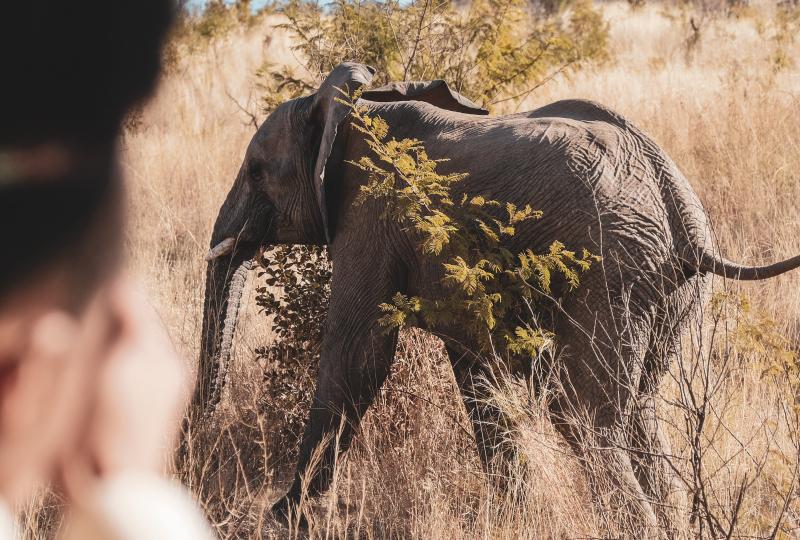
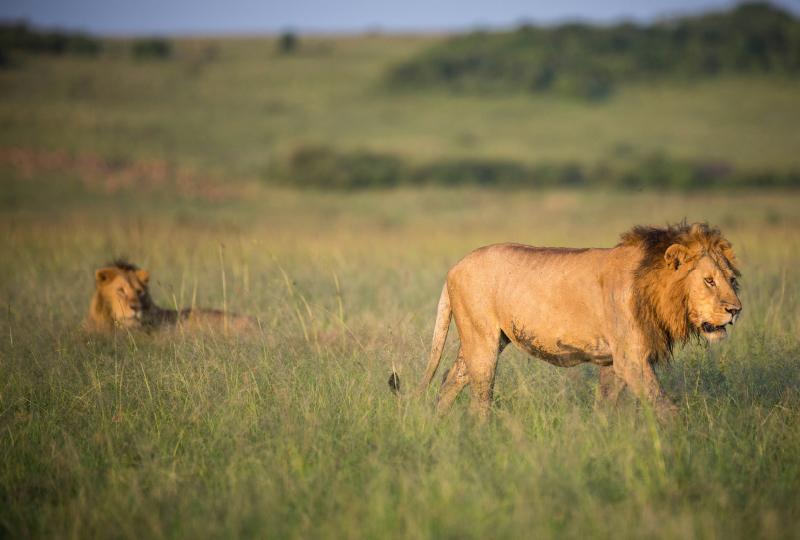
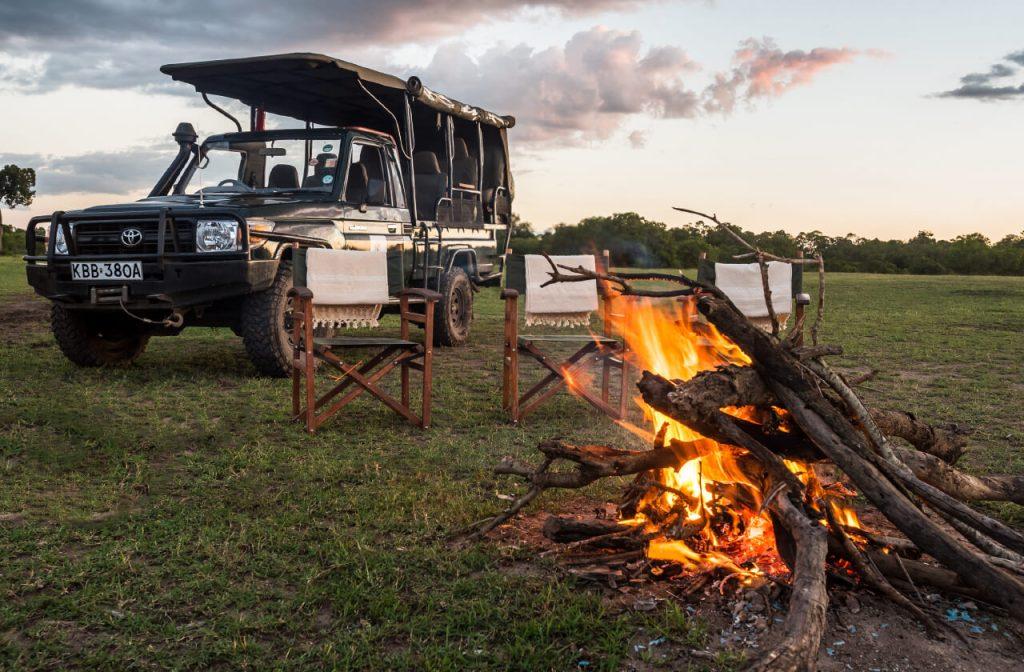
Wildlife In Masai Mara National Reserve
Masai Mara National Reserve is one of the best places on earth to spot most of the African ‘Big Five’ wildlife while out on safari. In addition to the popular sightings, Mara is home to some very remarkable creatures that you may not have heard of.
The reserve has an excellent collection of wildlife and three (3) of the Big Five (Lion, Leopard, Rhino, Buffalo, and Elephant) are commonly seen, however leopard sightings and black rhino are more occasional (they can sometimes be spotted in the northern section of the Mara Triangle).
Additionally to the Big 5 wildlife, the reserve is one of the best in East Africa for Big Cats. Other sightings include Cheetahs, Giraffes, Hippos and Zebra, not forgetting the smaller predators such as bat-eared fox, black-backed jackal and spotted hyena which are also present. The antelope families include impala, reedbuck, Thomson’s gazelle, eland and topi, while buffalos, elephants and giraffes are easily spotted.
The Chances For Spotting Wildlife In Masai Mara
That said, it’s somewhat possible to spot not just the ‘Big Five’ as often mentioned widely, but rather the ‘Big Nine’ which includes; Lions, Leopards, Elephants, Rhinos, Buffalos, Giraffes, Zebras, Cheetahs and Hippos. This is made possible by the nature and richness of the reserves landscape, one can see all of the above animals not just in a single game drive, but also with a little more luck, within your 3 days Masai Mara safari drive in the reserve.
Best Time For Wildlife Viewing In Masai Mara
While planning your safari to Masai Mara, wildlife viewing in Masai Mara is good throughout the year, with the safari months from June to October relatively dry therefore offer the best general wildlife watching. If you wish to catch the wildebeest’s crossing, the best months for the wildebeest migration are August to October year to year as the animals move with the rain in search of greener pastures.
Birdlife In Masai Mara National Reserve
Simply put, the wildlife in Masai Mara is considered one of the finest collection of wild animals anywhere in the world. With more than 500 bird species recorded in the park, Masai Mara National Reserve tops as one of the best birdwatching destinations in Kenya and Africa.
Many of these birds are migrants, with almost 60 species being raptors. The most common include: vultures, marabou storks, secretary birds, hornbills, crowned cranes, ostriches, long-crested eagles, African pygmy-falcons and the lilac-breasted roller, which is the national bird of Kenya. Planning a birding safari in Masai Mara? This is the best choice that you can make – take note that the Migratory birds are present from November to April.
Kori Bustard
Rufous-Bellied Heron
Secretary bird
Sooty chat
Usambiro Barbet
Abdim’s stork
African finfoot
African wood owl
Ayres’s hawk-eagle
Bateleur
Cinnamon-breasted bunting
Denham’s bustard
Giant kingfisher
Grey penduline tit
Grey-crested helmet-shrike (NE)
Hildebrandt’s starling
Jackson’s widowbird
Lazy cisticola
Ostrich
Purple grenadier
Red-throated tit
Ross’s turaco
Rosy-throated longclaw
Rufous-bellied heron
Rufous-necked wryneck
Saddle-billed stork
Schalow’s turaco
Secretary bird
Silverbird
Southern ground hornbill
Swahili sparrow
Tabora cisticola
Temminck’s courser
Trilling cisticola
Usambiro barbet (NE)
White-bellied go-away bird
Woolly-necked stork
Yellow-mantled widowbird
Yellow-throated sandgrouse
The grasslands are home to turkey-sized Ground Hornbills, Secretary Birds, Kori Bustards, Jaunty Crowned-Plovers and flocks of White Storks. Spectacular flocks of Crowned Cranes, Saddle-Billed Storks, groups of Yellow-Billed Storks and Sacred Ibis can be spotted in the swamplands. This is also a great place to spot the Goliath Heron, Grey Heron, Black-headed Heron and Great White Egret. Masai Mara’s Musiara Marsh is an excellent spot to do some birdwatching. It’s the only place in Kenya where the Rufous-bellied Heron breeds and where you can spot the endangered Madagascar Squacco Heron between October and May.
As you head over to the legendary Mara River to spot any one of seven species of kingfishers, from the Giant Kingfisher to the tiny Pygmy Kingfisher. The forests lining the river are home to the colourful Ross’s Turaco and the Schalow’s Turaco. The most impressive birds of the Mara are the birds of prey, from the mighty Martial Eagle to the tiny Pygmy Falcon. The Martial Eagle is so strong it is known to feast on young impala and dikdik. However, the most iconic of the birds of prey is the Bateleur. Looking up and watching a Bateleur glide across the clear blue African skies is quite a memorable sight to see.
Best Time For Bird Watching In Masai Mara
No matter what time of year you visit the Masai Mara, you’re sure to have a good bird watching during any month of the year, but then again the best time of year for birdwatching in Mara is from November through to April when migratory birds from Europe and North Africa arrive, this matches with the rainy season (wet season – November to May), a time of year when many birds can be seen in their ‘breeding’ plumage. Taking a 4 days Masai Mara safari can really work for you if you wish to explore both birdlife and the rest of the wildlife.
Best Time To Visit Masai Mara National Reserve
The best time to visit Masai Mara National Reserve is during the Dry season from June to October. At this time, animals draw near to rivers and waterholes and vegetation is thinner, making wildlife easier to find and to see. During the short rains (March, April, November and December), brings out even more adventure atmosphere to the safari. That said, your best chance to witness the Great Migration drama is between August and October.
Nevertheless, thanks to its abundant resident wildlife and favorable temperate climate, the Masai Mara is widely considered as a fantastic all year-round safari destination in Africa. Its endless wide and open plains mean there is always something to see – no matter what time of year you visit.
For some travelers, the Great Migration safari plays a big part in their choosing on when to visit the Masai Mara. However, if you can’t (or don’t want to) visit Kenya during migration season the Masai Mara has plenty to offer visitors aside from the Great Migration.
To travelers debating on when to visit Masai Mara: Listed below is a guide on some of the best month to plan a visit.
These three months are pretty hot and dry. Since water is more scarce during this time of year, therefore we shall be visiting the waterholes for excellent wildlife viewing. As for birdwatching lovers, don’t forget to look towards the blue skies as well, it’s also bird migration season and your chance to do some bird spotting in Masai Mara the migratory species from North Africa and Europe can be spotted frequently in the area.
Avoid the crowds In February, this is when to go to Masai Mara for a safari and witness Africa’s big cats as they trail the endless savannah plains. As for Big 5 wildlife safari photographers this is your time particularly in the Mara’s private conservancies.
This period marks what is considered as the ‘long rains’ or rather the wetter period in Masai Mara’s. Don’t mistake, it’s still hot during these months, but it’s exclusively rainy during the month of April. The park is very beautiful during these periods bringing about shades of green. March is a short rainy month in the Masai Mara where most of the days will have afternoon thundershowers whereas April is also still low season safari month in Kenya and has more rainfall than any other time of the year.
Additionally, there is slightly less rainfall during May but it’s still one of the wettest times of the year in the Masai Mara. Muddy roads, and sometimes drizzles. Therefore if you wish to visit the Mara during this time, we recommend flight safaris to Masai Mara.
Come during this period and you’ll find pleasant temperatures, warm and dry weather, and mostly clear blue skies above. During this time, animals usually draw near to the surrounding rivers and available waterholes to quench their thirst, additionally the vegetation is thinner, making wildlife easier to spot. It’s just the perfect weather for wildlife safaris and a popular time for safari travel to the Masai Mara.
The month of June marks the end of the ‘long rains’ and welcomes the beginning of the busy safari season. It’s a much drier month, the days are far cooler than any other time of the year.
Come July, expect the wildebeest herds to start marching into Masai Mara after their journey from the Serengeti National Park. Daytime conditions are very satisfying with warm weather. It’s the driest month making the wildlife gather near the water holes, it’s also one of the busiest months of the year – prices go up and wildlife sightings can become crowded in the reserve.
August is still a dry month in the Masai Mara with cooler temperatures as July, especially at night. This is a popular safari month to witness the Great Migration drama, the celebrated Masai Mara River crossings.
Masai Mara in September is slightly warmer than August. It’s still the dry season, which delivers an exceptional game viewing and it’s still a great month with luck to catch the Wildebeest Migration. October is one of the hottest months in Masai Mara
These last two months of the year welcomes the ‘short rains’. Still an excellent period for safaris, just expect grey, cloudy skies and short rain showers in the afternoons which don’t last long. Even though the temperatures are still high, the mornings can be rather chilly.
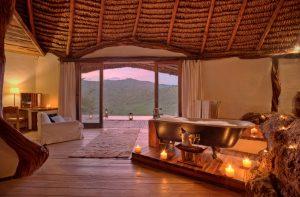
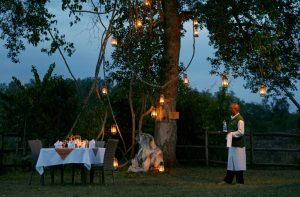
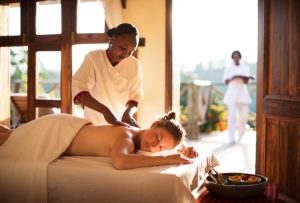
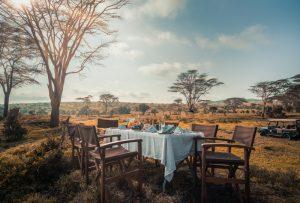
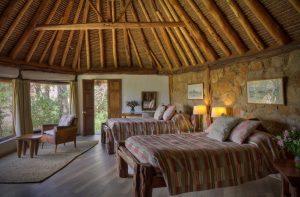
Weather & Climate In Masai Mara National Reserve
Sunshine or Rainfall, a visit to the Masai Mara will never disappoint; therefore before packing up for your safari to Masai Mara, have a look at what you can expect as far as weather and climate in the Masai Mara.
Masai Mara has a generally mild climate chillier than you might expect when in an area that’s this close to the equator. The reserve sits at an altitude varying from 1500 to 1900 meters, and you can expect average daytime temperatures which are comfortable, and evening temperatures can become quite chilly. The region’s Dry seasons starts from (June to October) whilst the Wet season (November to May) consist of a shorter and a longer rainy period that are accompanied by a brief dry spell.
Consider this the perfect time for going on a Kenya safari; the days are sunny and it’s rarely very hot. Nevertheless pack some warm clothes for the morning game drives which can be very chilly.
June, July & August – During this time, consider Masai Mara generally sunny and dry with afternoon temperatures averaging at around 25°C/ (77 degrees Fahrenheit), and during the night you will experience cold evenings and early mornings when temperatures are at around 12°C/54° Fahrenheit.
September & October – At this time of year, it’s mostly dry although you can expect occasional rain showers. Daytime temperatures in October are slightly at an average of 27 degrees Celsius (81 degrees Fahrenheit). On your early morning game drives expect it to be chilly at around (around 12°C/54°F).
It’s that time of the season when we experience rainfall in the Masai Mara. Talking about abrupt short afternoon showers. We recommend that on your list of what to pack for your Kenya safari bring with you warm clothing.
November & December – marks the start of the ‘Short rains’ – expect short rain showers during these two months with afternoon temperatures at an average of around 27°C/81 degrees Fahrenheit).
January & February – Rainfall slows down, although incidental rain shower do still occur.
March, April & May – this is the long rainy season with April being the wettest month. However – you don’t have to worry about it raining all day long but it does rain regularly, typically in the form of afternoon showers. Early morning game drives can be slightly warmer with average temperatures in Masai Mara around 13°C/55°F.
How To Get To Masai Mara National Reserve
Your flight entry point to Kenya for safari will most likely be Jomo Kenyatta International Airport (JKIA) – Nairobi, 15km/9mi southeast of the capital city Nairobi.
After landing at JKIA, it’s completely up to you; Nairobi to Masai Mara by Road & Air are the options available for you. In for an adventurous road trip to Masai Mara? If you’re driving to Masai Mara National Reserve, the location is 270km/168miles west of Nairobi. The road to the reserve is paved all the way from Nairobi to Sekenani Gate, and expect a driving time of about 5 to 6 hours*. If you’re driving to the northern parts of Masai Mara (including the Mara North Conservancy and Mara Triangle Conservancy), there’s an unpaved stretch of 70km/43mi soon after leaving Narok.
The most common way to travel to the Masai Mara by road is by booking a guided drive-in safari. Especially for those on group safaris to Masai Mara, the safaris normally start from Nairobi and allow you to mix Masai Mara with other multiple safari destinations in Kenya that you plan on visiting. Some of these Kenya safari itineraries usually include stays in either Amboseli National Park, Lake Nakuru National Park, Ol Pejeta Conservancy or Samburu National Reserve among other Kenyan parks. Don’t hesitate to contact us if you are interested in a long stay Kenya safari itinerary, or wish to travel by road from Nairobi to Masai Mara we are happy to assist! Even if it’s planning Masai Mara self-drive safaris.
Once you arrive at Masai Mara National Reserve there are several entry gates. There are five main gates leading into the Masai Mara National Reserve: Sand River Gate, Talek Gate, Sekenani Gate, Musiara Gate and Oloololo Gate. Although Musiara Gate and Oloololo are a bit further away and will take an additional 30 minutes to reach as compared to the other gates. All gates open at 6.00 AM in the morning and all gates close at 6.00 PM in the evening.
Domestic Flights To Masai Mara
Masai Mara tours are often include ‘fly-in’ itineraries to maximize your time on safari. Therefore if you would you prefer a quick and easy air transfer into the airstrip closest to the safari lodge you will be staying at, below we’ll share some info to help you decide what’s best for you; for those wishing to fly to the Masai Mara.
Some of the recommended International airlines you can take while flying to Kenya’s JKIA – Jomo Kenyatta International Airport (NBO) include; KLM Royal Dutch Airlines, Air France, British Airways, Emirates, Etihad Airways, Kenya Airways, Lufthansa, Qatar Airways and Swiss all operate flights from a multitude of major airports around the world.
If you’re on a Kenya package tour, you will probably find that the charter flights in between parks are booked by us, your tour operator. If you are short of time, our 2-Day Masai Mara from Nairobi, using flight is your best chance.
Our favorite route for a Masai Mara fly-in safari is by flying from Nairobi’s Wilson Airport (WIL). From here it is a short (between 45 and 60 minutes) flight to the Mara. That said, flying into the Masai Mara is another of our recommended approach of travel.
- Keekorok Airstrip
- Serena Airstrip
- Musiara Airstrip
- Mara North Airstrip
- Ol Kiombo Airstrip
- Siana Airstrip
- Kichwa Tembo Airstrip
- Ngerende Airstrip
- Ol Seki airstrip
- Olare Orok Airstrip
- Angama Airstrip
Travelling from the Masai Mara to Serengeti National Park is more or less complicated than one would hope. You have an option of travelling via land (road transfer) from the Mara to the Serengeti or vice versa (via Isebania or Namanga border posts).
That said, flying from Masai Mara to Serengeti is still the most time-efficient and convenient mode of travel. The issue is that one needs to cross the border between the two countries, but none of the airstrips in the Mara (and Serengeti) offer border facilities. Nonetheless, two flight routes are available when travelling from the Mara to the Serengeti.
The first route allows travelers to fly from the Masai Mara to the Serengeti camps in Tanzania. This route is accessible through the Migori airstrip (on the Kenyan side) and Tarime airstrip (on the Tanzanian side), both near the Isabania border post. The connection involves a road transfer between the two airstrips, providing a relatively convenient option for guests wanting to experience both the Masai Mara and Serengeti.
Please note that this flights only operate during high seasons and requires a minimum of two passengers per flight. The scheduled flights starts with picking up guests from various airstrips in the Masai Mara and arriving at Migori at 12h00. After a road transfer via Isabania border post for immigration clearance, passengers connect onto the Coastal Aviation flight to the Serengeti departing at 14h00 from Tarime.
The second option, which we recommend, involves travelling back to Nairobi Wilson (WIL) and connecting to a flight to Kilimanjaro International Airport (JRO). This option incurs the least hassle, as flight operations are reliable, and there is no overland transfer required between airstrips, unlike the Migori / Tarime option. Additionally, this option allows you to stay overnight in Nairobi to catch your breath after your safari experience in the Mara before continuing your safari in Tanzania.
The one which you fly into will depends on where you are staying during your safari. Upon your arrival at the airstrip which is close to your accommodation, a 4 X 4 Land Cruiser safari vehicle will be waiting to take you to your Masai Mara safari lodge; and the advantage is that you will begin with a game drive enroute to your camp.
Take note, it is also possible to fly from Kilimanjaro International Airport (JRO) in Tanzania. There are also direct flights (mostly in high season) from the Kenyan coast (Mombasa and Diani) and other national parks in Kenya such Amboseli National Park and Samburu National Reserve.
Safari Tours To Masai Mara National Reserve
Want To Visit Masai Mara National Reserve? The Mara is a rewarding African safari destination which offers many unique experiences, depending on your travel style from Mid-Range Masai Mara safaris to Luxury Masai Mara safaris.
Additionally, for those who wish to explore Kenya in more intimate ways, our Masai Mara Honeymoon Safaris are your best bet; whilst those who would desire to connect with loved ones, our Masai Mara Family Safaris offer you that opportunity; nonetheless the list doesn’t end there, if spending time alone is your way of travel, explore our Masai Mara Private Safaris.
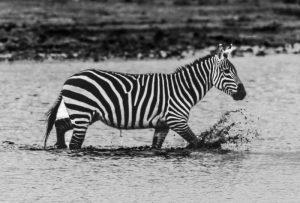
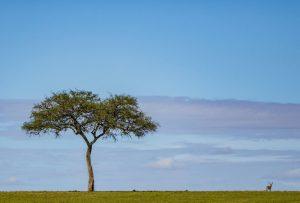

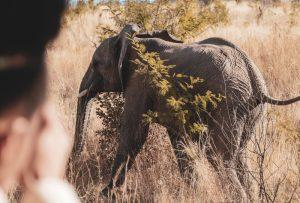
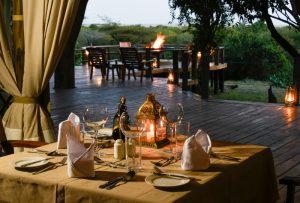
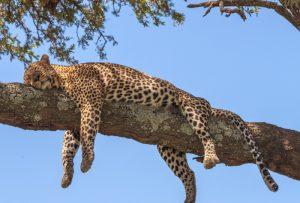
-
A flying safari offers you a bird's-eye view of Africa's Iconic Masai Mara.
-
Our 4-day Masai Mara flying safari package saves you the time needed to move from Nairobi to Masai Mara.
-
Make the most of your short tour to Masai Mara by flight.
